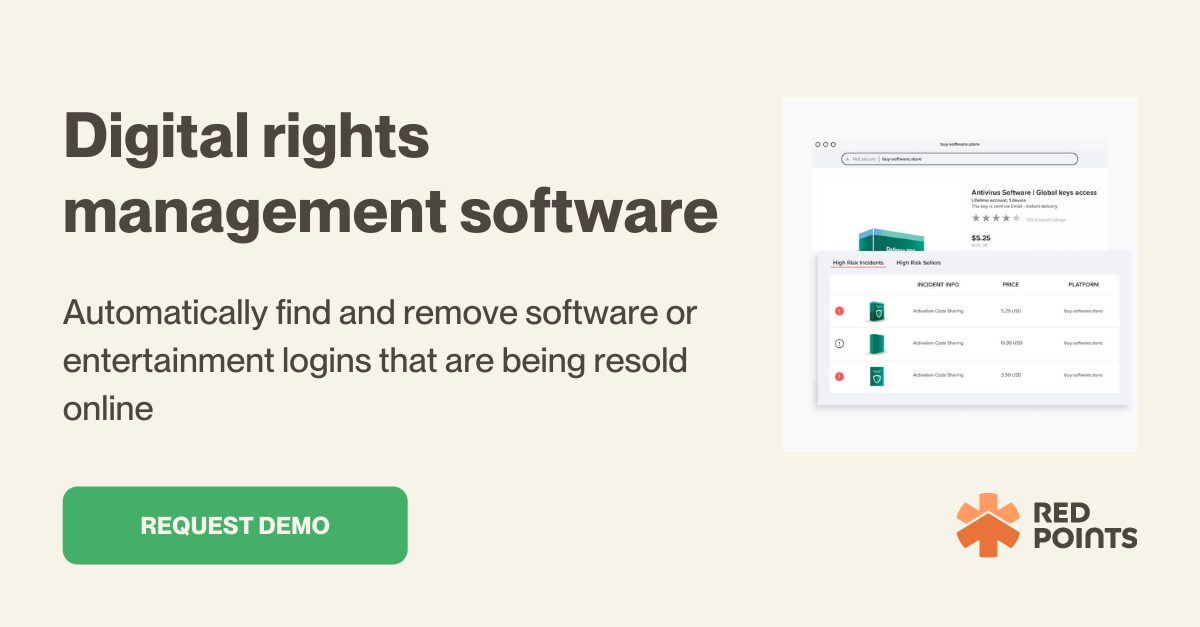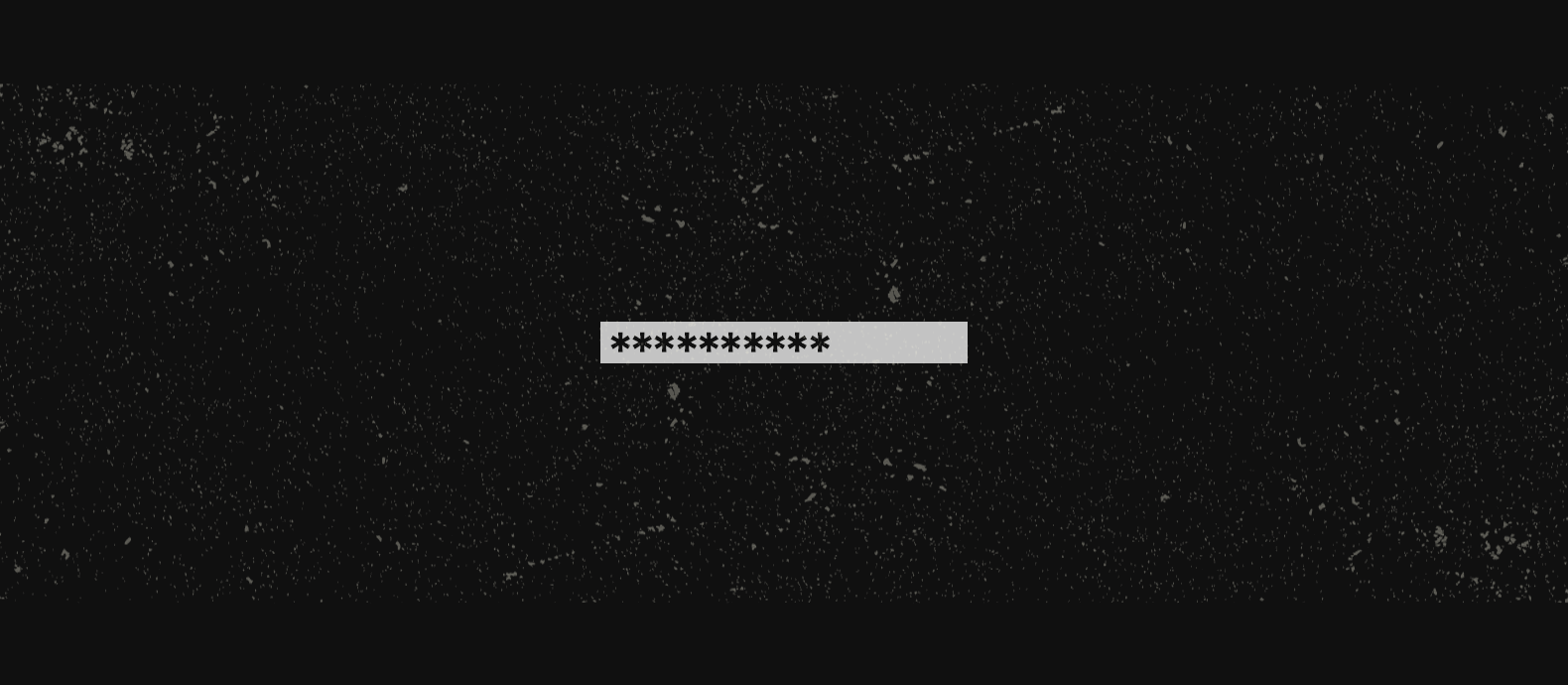Ebooks are an increasingly popular alternative to physical books for consumers and the number of ebook readers is expected to reach 1.16 billion by 2025. Although ebooks are a promising market, authors, publishers and vendors are struggling with online piracy due to the rise of peer-to-peer file exchange services such as torrent sites.
Data from 2017 shows that in the United States 31.5 million ebooks were illegally downloaded that year which resulted in $315 million in total sales losses. Digital rights management (DRM) is a method to protect ebooks from illegal downloads and file sharing. While DRM offers protection for the copyrighted works of authors and publishers, it can still be violated. Therefore, DRM solutions should be automated by technology and encompass detection, proof and removal to be fully efficient.
In this article, we clarify what DRM for ebooks is and what it entails. We talk about how to use DRM for your ebooks through your sellers and show you how to protect your ebooks with software to keep control over your intellectual rights and digital content.
What is Digital Rights Management?
Digital Rights Management is an approach to protect copyrighted digital media in addition to traditional copyright law. Through the use of technology, DRM limits access to copyrighted works to prevent the illegal copying, modification and distribution of those works. It seeks publishers and content creators to keep control over what paying users can do with their material.
What is DRM for ebooks?
DRM limits access to an ebook to only the person who purchased it and moreover, they can also only view it on the device or app from the seller. That means, ebooks sold on Amazon, for example, can only be viewed on Amazon’s Kindle device and are not possible to be multiplied or shared.
DRM also seeks to prohibit the printing of an ebook. Sometimes it is possible to print small parts of a book or in case the whole book is printable, it will have a watermark.
Is a watermark a DRM?
Although often equalized, watermark and DRM are not the same things. What they have in common is the intention to prevent unauthorized distribution such as piracy, however, they are based on different technologies.
DRM uses a combination of codes to encrypt files and requirements from users to access the content. Such requirements can be special software, hardware or credentials like device IDs or encryption keys that users can purchase in order to view the media.
Watermarks, on the other hand, include a so-called payload in digital files which is information that reveals the identity of the content or its owners such as ebook retailers or customers who purchase ebooks. Payloads can be embedded either visible or invisible. In the first case, they can directly indicate a name or email address, or they contain coded information in the form of alphanumeric recognition, user ID or encrypted email addresses. Invisible payloads mark digital files through hidden nonvisible watermarks that indicate such information.
The fundamental difference between the two techniques is that DRM-protected ebooks can only be viewed on the devices or apps from the vendor whereas watermarked ebooks can be read on any device or app that supports the format of the file such as EPUB or PDF.
Why You Need DRM Protected eBooks
The online world makes access to digital content like ebooks much easier for users. But it also increases the risk of illegal copying and sharing of copyrighted works. DRM is a way to protect ebooks from unauthorized downloads, printing and sharing. From a business perspective, DRM keeps control of the distribution of ebooks and thereby protects sales and revenues. In other words, when you control how and by whom ebooks are used, you make sure that people will keep paying for ebooks to get access to the content.
Protecting Your Ebooks with Digital Rights Management
You can protect your ebooks in two different ways with DRM. One option is using a vendor DRM system and the second option is to apply specialized DRM software solutions.
Add DRM to your ebook through vendors
Authors can protect their ebooks by using DRM services provided by online vendors. They can submit their manuscripts to the retailer which automatically will add a DRM to the ebook. Retailers have an advantage using DRM because they can bind customers to the platform as most websites that sell ebooks will also sell their own devices. In that case, customers have to buy the ebook and device from the same website as they can only read ebooks from the website where they purchased the device.
There are three main ebook DRM systems to protect ebooks which are either bound to a single vendor or used by different vendors.
Amazon DRM
Amazon applies its own DRM to all their ebooks which are bound to the Amazon Kindle device or Kindle app. Therefore, readers can only view ebooks on the Kindle or the app and are not able to share or copy the books.
Apple FairPlay DRM
Like Amazon, Apple uses its own DRM system which means that ebooks purchased from Apple can only be read on the Apple books app.
Adobe DRM
Other vendors, including Google Play, Kobo and Barnes & Noble, use Adobe’s DRM. Ebooks from these merchants are also bound to the respective devices or apps from those vendors. However, customers also have the option to access ebooks through Adobe’s software, Adobe Digital Editions, which is connected to an Adobe account. Ebooks opened through this software can only be viewed by the Adobe account owner to prohibit sharing.
DRM software
The second option you can choose to protect your digital rights is working with software solutions that detect and remove illegal logins that are being sold online. As DRM sometimes gets violated, managing your digital rights through specialized software is a great solution as it can detect and remove illegally offered credentials for ebooks.
Red Points offers a highly effective DRM software that can scale detection and removal through bot-powered search and machine learning across marketplaces and social media platforms.
Red Points´ Digital Rights Management software
Red Points’ digital rights management software is designed to protect your digital content. It automatically detects and removes software or entertainment logins that are being resold online. Our technology-based solution applies bot-powered search that scans online marketplaces and social media accounts around the clock to find infringers reselling credentials to access your products. The system constantly improves through machine learning technology. Validation of potential infringements runs through anonymous test purchases, detailed reviews, and prioritization of risk level. Our system enforces your rights automatically by taking down and blocking activation keys that violate your rights.
Get in touch with us and learn in 15 minutes how Red Points can protect your brand with our digital rights management software.







